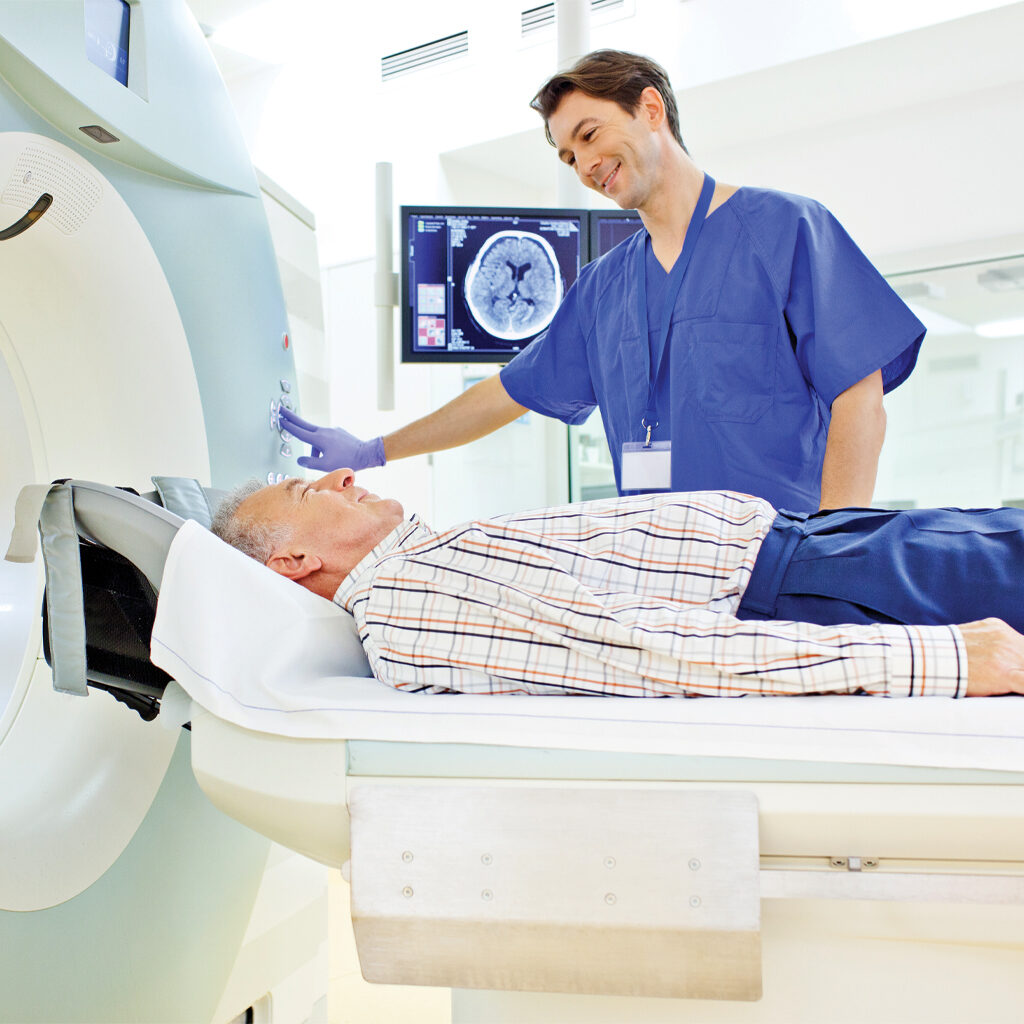Computed Tomography Scans
What Are CT Scans?
Also known as a “cat scan,” a CT examination is an imaging technology that uses X-rays to obtain precise and accurate images of the inside of the body. A special camera revolves around your body, taking a series of X-ray images that a computer reconstructs into “slices” of anatomy that a radiologist will review to help your doctor arrive at an accurate diagnosis of your condition.
Unlike a standard X-ray, a CT scan shows exceptionally detailed images of the body’s internal organs, bones, blood vessels, and more. It can detect diseases like cancer, problems with the vascular system such as restricted blood flow or heart disease, identify the source of joint or soft tissue pain, and much more.
Screening Lung Cancer with Low-Dose Lung CT
In recent years, CT has emerged as the preferred test for identifying lung cancer early, at a time when more treatment options are possible. Current and former smokers who are assessed with CT have a 20% greater survival rate than those who are evaluated with standard chest X-rays. In addition, special protocols are used by A.T. Radiology to effectively lower radiation exposure so that the test is safe to have on an annual basis.
If you are between the ages of 50 and 77, have smoked the equivalent of a pack a day for 20 years, have no signs or symptoms of lung cancer and are a current smoker (or have quit within the last 15 years), you may qualify for a low-dose lung CT screening. Call us for more information or ask your doctor if LDCT lung screening is an option for you.
Preparing for Your CT Scan
Before your CT examination, please inform your radiologist or technologist if you:
- Have had a previous adverse reaction to iodine contrast injection
- Have renal disease
- Are pregnant
- Are over the age of 65
- Have asthma and use an inhaler 2 or more times per day
- Are diabetic and taking Glucophage
With some examinations, an injection of contrast into a vein is required. The CT technologist will explain the procedure further if your exam requires this.


